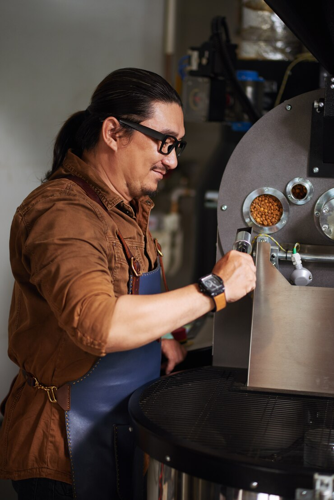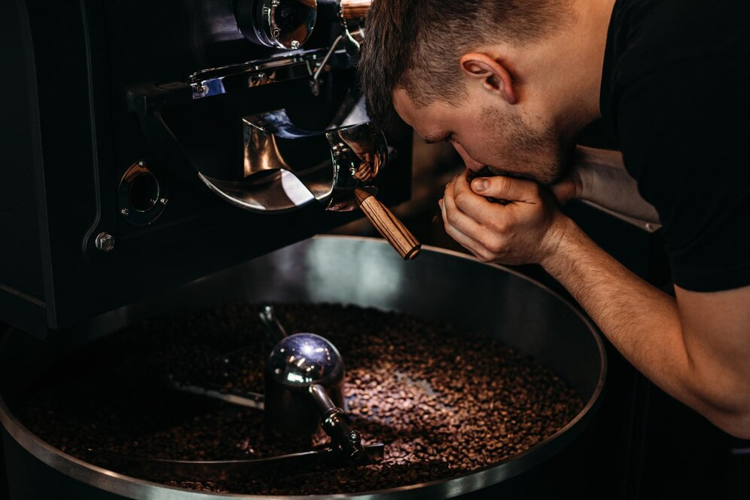Ever had that moment? You taste an amazing Ethiopian Yirgacheffe at a local shop, buy some beans, and then, it’s just not the same at home? It's not just you. The roast plays a HUGE role. The how of that roast, drum or air roaster – that’s where it gets interesting. It’s why identical beans can taste totally different. Let's dive in!
For many, the quest for the perfect home roast begins with selecting the right equipment. If you're exploring the world of air roasting, consider browsing a selection of coffee air roaster options to find the perfect fit for your needs. With the right equipment, achieving cafe-quality roasts at home is within reach.

Roasting 101: More Than Just Browning Beans
Roasting is a transformation. You take these hard, green, grassy-smelling beans and turn them into something incredible. The "roast curve" is basically your recipe. First, the drying phase. Moisture exits. Grassy smells fade. Next, the Maillard reaction. This is magic. Chemical reactions creating complex flavors – browning bread, searing steak. Yum! First crack sounds like popcorn, signaling you're actually roasting coffee now!
Finally, the development phase. Refining flavors. All those reactions equal flavor, aroma, color! And the heat transfer, the timing? Everything. Mess it up, and it becomes bitter, acrid city! It’s that important. Strap in.
Drum Roasting: The Classic Approach
Drum roasting. It's classic. Think rotating drum, heated by gas or electricity. The beans tumble, cooked by hot air (convection) and direct contact (conduction). Slower roast times – 12-15 minutes – allow deeper flavor development, more sweetness, complexity. Many specialty roasters swear by this method.
You often get a “fuller body” and “roundness." Batch sizes vary. Small 1kg sample roasters to massive commercial machines that do hundreds of pounds. It really depends. Roast control? Airflow, charge temp (initial drum temperature), drum speed – it all affects the beans.
But it's more than switches and thermometers. A good roaster uses sight, smell, sound. They know the coffee. A well-developed bean, it kinda sings. Sure, science matters. But experience and a roaster's intuition guide the best decisions; some guys have been doing this for decades. My old boss used to say he could "feel" the roast. Sounds crazy, but he made amazing coffee.
Air Roasting: Modern Precision, Cleaner Cups
Air roasting. It’s different. Fluid-bed technology. Beans levitate in hot air. Faster roasting, 6-10 minutes. Cleaner, brighter cup profile. Higher acidity. The bean's natural characteristics are better preserved. Great for single-origin coffees, when you want to showcase their unique qualities. Small batches are ideal. Consistent heat application is a plus. Precise control is key.
It is cool. Industrial applications use it, sure. The Sivetz roasters are famous. But home air roasters are getting advanced too, like the Ikawa and Roest. My friend uses an Ikawa and gets phenomenal results with light-roasted Kenyans.
Air roasters aren’t just for tech nerds. They offer a different control, emphasizing consistency and repeatability. Really valuable when you want that perfect cup, again and again.
Drum vs. Air: The Breakdown
Let's compare them. Here is a list to break down the similarities and differences.
Roast Time: Drum roasters: slower (12-15 mins). Air roasters: faster (6-10 mins).
Flavor Profile: Drum roasters: fuller body, sweeter. Air roasters: brightness, clarity.
Control: Drum roasting: manual adjustments, intuition. Air roasting: precise, automated, consistent.
Batch Size: Drum roasters: small/large batches. Air roasters: smaller batches, great for sampling.
Learning Curve: Drum roasting: steeper learning curve, needs experience. Air roasting: easier to learn, more straightforward.
So, what type of coffee do you like? Complexity, syrupy body? Vibrant cup, dazzling acidity? That might determine your roaster preference.
The Science of Heat
Physics time. It’s all about how heat hits the beans — and it’s more nuanced than just “hot equals roast.” In drum roasters, heat transfers through a mix of conduction and convection. Conduction is direct contact — like searing a steak in a hot pan — while convection uses hot air to circulate heat, like baking in an oven. This dual action penetrates the beans slowly but deeply, allowing for rich, complex flavor development from the surface all the way to the core. But yes, it takes longer and requires more finesse to manage heat flow and avoid scorching.
Air roasters, on the other hand, rely solely on convection. Hot air suspends and tumbles the beans in a fluid-bed system, providing a faster, more even roast. Since there's no physical surface contact, beans roast more uniformly and with less risk of burning. This method also excels at chaff removal — that papery skin from roasted beans — thanks to the powerful airflow. It’s a bit like comparing oven-roasted potatoes to air-fried ones. Both delicious, but texturally and technically different. The result? A faster roast with bright, clean flavors, ideal for showcasing single-origin nuances.
The Artistry in Both
Regardless of the machine, you need artistry. Coffee roasting isn’t just a technical task — it’s a craft. With drum roasting, the process leans heavily on the roaster's intuition and sensory awareness. Seasoned pros listen for first crack, observe bean color, and even smell changes in aroma to guide their decisions. There’s a rhythm to it — adjusting airflow, drum speed, and heat input on the fly. It’s hands-on, requiring experience and a deep understanding of how different beans behave under heat.
Air roasting leans more into precision and repeatability. Digital controls and roast profiling make it easier to reproduce that perfect roast once it’s dialed in. But it’s not entirely set-and-forget. You still have to design the profile, adjust variables like airflow and temperature curves, and taste-test for results. There’s art in the data, and just as much skill in interpreting it. Ultimately, roasting blends science and instinct, no matter the method. And that’s what makes it personal — every roaster brings their own style, preferences, and flair to the craft.
Which Roaster for You?
Practical time. What’s best for you?
Home Enthusiast: An air roaster, like the Fresh Roast SR540, it's a great start. More affordable, user-friendly, small batches. I started with one of those!
Specialty Café: A good drum roaster is amazing. A Diedrich or a Probat is an investment, sure. But the control, flexibility, and quality are worth it.
Industrial Operations: Air roasters, like the Sivetz, are kings. High volume, consistent results.
Hybrids exist too, dual-heat roasters. The best of both worlds. Don’t be afraid to experiment.

Beyond the Method
Tools matter. But great coffee comes from thoughtful processes, passion, and a willingness to learn. Science gives you control, yes. But don't forget that gut feeling. Knowing when to push, when to pull back. Flavor is subjective. Experiment! Discover your preference. Make mistakes. The journey of coffee roasting? Continuous learning, infinite possibilities. Now you're prepared! Go visit a roastery. See both in action.




(0) comments
Welcome to the discussion.
Log In
Post a comment as Guest
Keep it Clean. Please avoid obscene, vulgar, lewd, racist or sexually-oriented language.
PLEASE TURN OFF YOUR CAPS LOCK.
Don't Threaten. Threats of harming another person will not be tolerated.
Be Truthful. Don't knowingly lie about anyone or anything.
Be Nice. No racism, sexism or any sort of -ism that is degrading to another person.
Be Proactive. Use the 'Report' link on each comment to let us know of abusive posts.
Share with Us. We'd love to hear eyewitness accounts, the history behind an article.